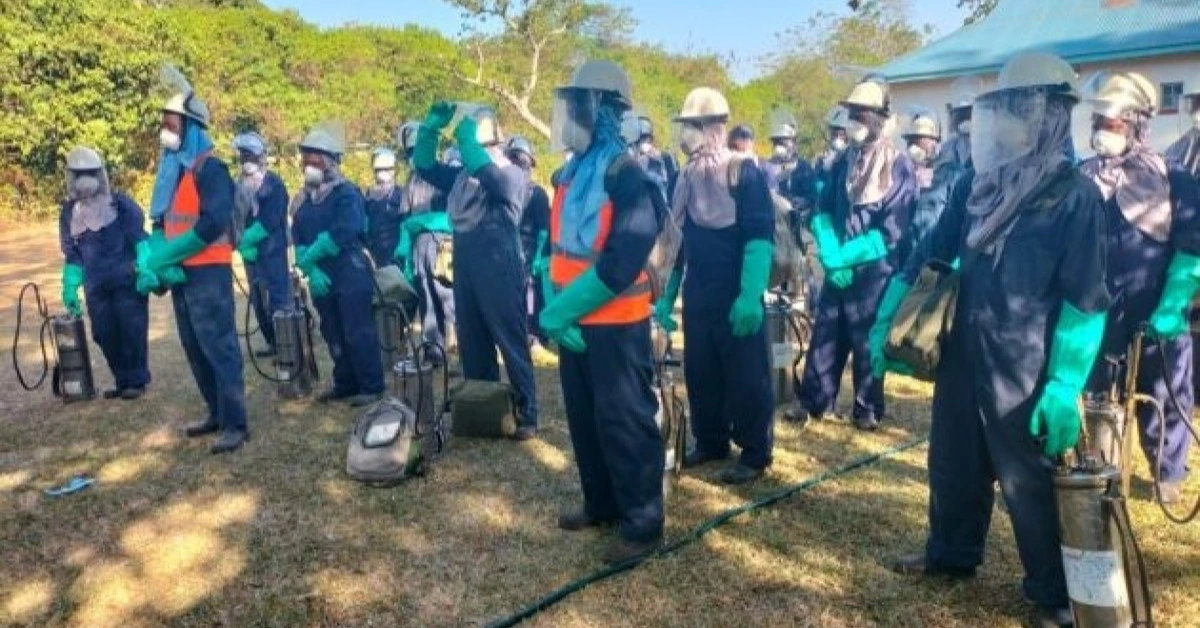
KENYA – The Ministry of Health is set to launch the second phase of Seasonal Malaria Chemoprevention (SMC) in Turkana Central Subcounty this June.
This follows the first phase in 2024, introduced after the area recorded 102,000 malaria cases, with 60% occurring between May and September.
SMC is a strategy recommended by the World Health Organization (WHO) since 2012. It involves giving children at high risk of severe malaria a preventive dose of antimalarial drugs during peak transmission seasons.
The approach complements other malaria control efforts such as mosquito net distribution, early diagnosis, and treatment.
According to Public Health Principal Secretary Mary Muthoni, the second phase will integrate digital technology using the Electronic Community Health Information System (eCHIS) platform.
“Data from both 2024 and 2025 campaigns will guide future expansion and improve malaria prevention strategies,” Muthoni stated.
An assessment by the National Malaria Control Programme, Turkana County Government, Moi University, and Duke University showed a 65% increase in malaria cases during the rainy season.
In response, the Ministry has strengthened interventions, including distributing insecticide-treated mosquito nets (ITNs), improved malaria case management, and targeted prevention strategies like Indoor Residual Spraying (IRS) and SMC.
The first SMC campaign in June 2024, supported by Catholic Relief Services (CRS), targeted 38,585 children under five years.
The campaign included five cycles, each 28 days apart. By the final cycle, 71% of the targeted children had completed all five doses, leading to a 71% drop in malaria cases.
Malaria remains a major public health concern in Kenya. In 2023, the country recorded approximately 5.5 million cases, with an incidence rate of 104 cases per 1,000 people.
Six counties—Busia, Kakamega, Kisumu, Migori, Siaya, and Vihiga—bear the highest burden, with an adjusted incidence of 748 cases per 1,000 people.
Other affected counties include Bungoma, Homa Bay, Kwale, Turkana, and West Pokot, where the rate stands at 474 cases per 1,000 people.
In 2024, IRS was conducted in Busia and Migori Counties with support from the U.S. President’s Malaria Initiative (PMI).
“The initiative targeted high-transmission areas, spraying 423,037 structures out of 444,890 eligible ones,” Muthoni said.
Coverage in Busia and Migori Counties reached over 95%, surpassing the WHO-recommended 85% effectiveness threshold.
As a result, malaria incidence in Busia County dropped by 50%, from 746 to 358 cases per 1,000 people.
The fight against malaria is further boosted by the mass distribution of Long-Lasting Insecticidal Nets (LLINs), supported by the Global Fund in collaboration with Kenya’s Ministry of Health, National Treasury, Kenya Medical Supplies Authority (KEMSA), and county governments.
Senior Program Officer for the Global Fund, Lisa Butler, emphasized the importance of mosquito nets in vector control.
“We have visited several counties, including Kisumu, Kericho, and Nandi, to ensure the nets reach intended households and are used properly,” she said.
The net distribution program covers 24 counties, with a target of 10.9 million nets. The initiative also incorporates digital tracking through the locally developed Digimal platform, which monitors net orders, delivery locations, and usage statistics.
“Kenya is leading in this digital approach, and we hope to see similar efforts in other countries,” Butler added.
KEMSA plays a key role in the last-mile distribution of the nets, ensuring they reach villages through a well-coordinated effort involving community health promoters and local leaders.
“We have streamlined the distribution process, from loading the nets onto trailers to delivering them to local posts,” said KEMSA Quality Assurance Manager John Aduda.
Malaria remains a significant challenge in sub-Saharan Africa, with 94% of the world’s malaria cases reported in the region.
According to the Global Fund, in 2022, malaria caused 608,000 deaths globally, 76% of which were children under five.
The Global Fund continues to invest in malaria control efforts, raising over US $5 billion annually to fight malaria, HIV, and tuberculosis in over 100 countries.
XRP HEALTHCARE L.L.C | License Number: 2312867.01 | Dubai | © Copyright 2025 | All Rights Reserved